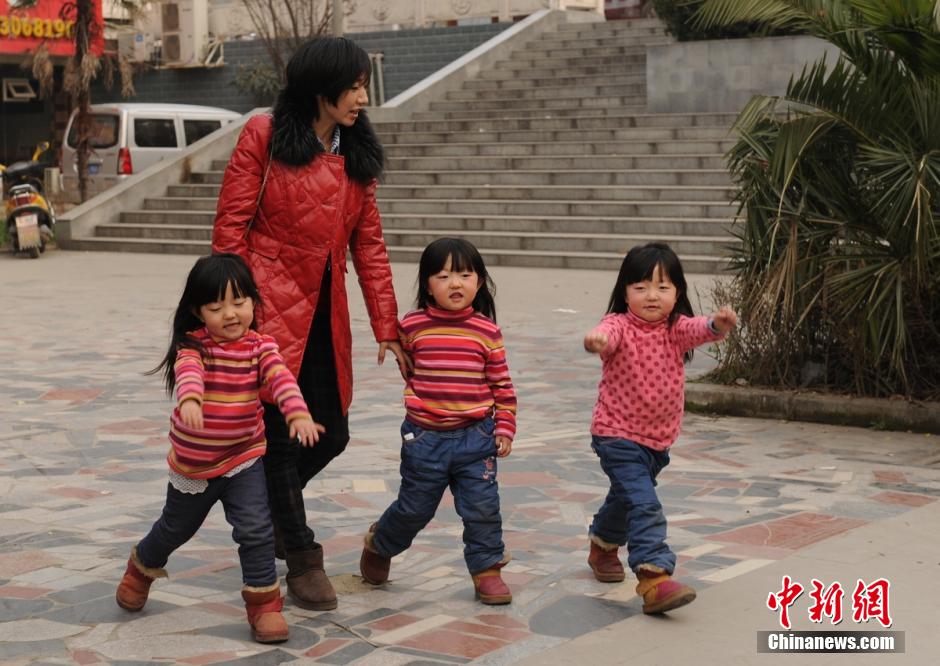 Cockfighting show staged in E. China's Heze during Spring Festival
Cockfighting show staged in E. China's Heze during Spring Festival
 Chinese New Year Flower Fair opens in San Francisco
Chinese New Year Flower Fair opens in San Francisco
 Festivities in Shanghai
Festivities in Shanghai
 PLA navy conducts drill in North China Sea
PLA navy conducts drill in North China Sea
 World's high-tech hotels
World's high-tech hotels
 Li Na poses with trophy on Brighton Beach in Melbourne
Li Na poses with trophy on Brighton Beach in Melbourne
 Six Chinese divers back safely after 300-meter saturation dive
Six Chinese divers back safely after 300-meter saturation dive
 Traditional wedding ceremony of Yao people
Traditional wedding ceremony of Yao people
 Taipei Game Show attracts geeky gamers
Taipei Game Show attracts geeky gamers
 |
| Residential property models are displayed at an expo in Shanghai. In first-tier and some second-tier cities, more tightening policies may be imposed in 2014, experts say. (China Daily) |
Home prices in China will experience greater regional divergence in 2014, with an increasing risk of price declines in smaller cities, industry experts said.
"It's a time of further divergence in China's real estate sector, whether in cities, enterprises or products," said Gu Yunchang, deputy head of the China Real Estate and Housing Research Association.
Marked regional divergences intensified in 2013 as prices rose, which was very different from the housing boom in 2009-2010.
Prices in first-tier cities rose much faster than elsewhere last year, driven up by a lack of supply and tougher curbs. In November, new home prices surged more than 20 percent in Beijing, Shanghai, Shenzhen and Guangzhou, according to the National Bureau of Statistics.
New supply increased much faster in smaller cities, with only moderate price rises.
Prices in third-tier cities (those below the provincial capital level) increased by 4 percent in November, "and housing affordability remains at an acceptable level", said Zhu Haibin, China economist at JPMorgan.
Given the price divergences, real estate policies will also differ, according to Huang Yu, deputy head of the China Index Academy.
In first-tier cities such as Beijing and Shanghai, and some second-tier cities, more tightening policies may be imposed in 2014. But in some third-tier cities, where supply is sufficient, policies may even be eased to stimulate demand, said Huang.
Economists and industry experts said home prices will rise again this year, although at a slower pace, with widening regional divergences.
"We expect house prices to increase 10 percent in first-tier cities and by 5 to 10 percent in second-tier cities. Prices in third-tier cities will remain flat in 2014," said Zhu.

 Special Coverage: Sochi Winter Olympic Games
Special Coverage: Sochi Winter Olympic Games  A day of a female high-speed train chief attendant
A day of a female high-speed train chief attendant New Year greetings from Chinese nationals in Africa
New Year greetings from Chinese nationals in Africa PLA navy conducts landing drills in South China Sea
PLA navy conducts landing drills in South China Sea  Blind date fair in Hangzhou
Blind date fair in Hangzhou  Highlights of Chinese New Year celebrations around the world
Highlights of Chinese New Year celebrations around the world  How do the Chinese spend their money during Spring Festival?
How do the Chinese spend their money during Spring Festival? 'Milk Tea' girl hosts Spring Festival gala of universities in U.S.
'Milk Tea' girl hosts Spring Festival gala of universities in U.S.  Brave mother fights cancer, enjoys Spring Festival with her triplets
Brave mother fights cancer, enjoys Spring Festival with her triplets President Xi visits border troops ahead of Lunar New Year
President Xi visits border troops ahead of Lunar New Year What do Chinese pack in their luggage in Spring Festival Rush?
What do Chinese pack in their luggage in Spring Festival Rush? Blind date fair in Hangzhou of Zhejiang province
Blind date fair in Hangzhou of Zhejiang province Film 'Where Are We Going, Dad' premiered in Beijing
Film 'Where Are We Going, Dad' premiered in Beijing  Australian Open champion Li Na returns to hometown Wuhan
Australian Open champion Li Na returns to hometown Wuhan Twin sisters serve during Spring Festival travel rush for the first time
Twin sisters serve during Spring Festival travel rush for the first timeDay|Week|Month